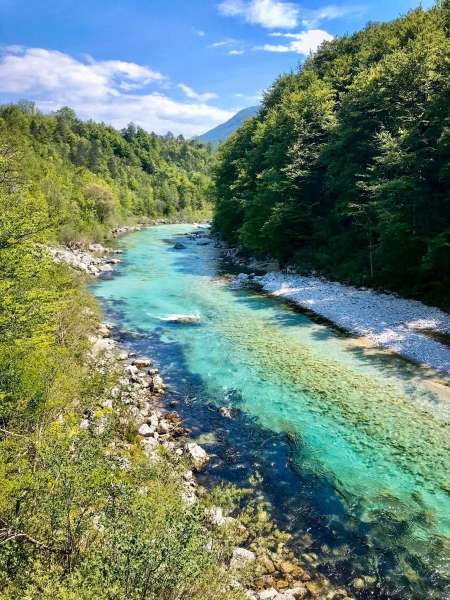While all Slovenian people were part of the Austro-Hungarian Empire until World War One, the western region of Primorska became part of Italy after the war.
Italy had claimed it as part of a 1915 secret pact it signed with the Triple Entente, pledging to attack the Central Powers in exchange for territorial gains.
The Paris peace conference ended in 1919 with no solution to the border issue between Italy and the newly-emerged Kingdom of Serbs, Croats and Slovens, Yugoslavia's predecessor.
Then, under the 1920 Rapallo Treaty, Italy got what is roughly referred to as Primorska, including the cities of Trieste and Gorizia, Vipava and Soča Valleys, Kras, Istria and parts of the Notranjska region.
The area remained under Italy, or under Nazi Germany after its 1943 capitulation, until the end of World War Two, when Istria and Trieste were occupied by Yugoslav Partisans, while the western part of Primorska was taken by the allies.
Within a month, the allies made the Partisans retreat in June 1945, dividing the area into two zones, one under the allied command and the other under the Yugoslav military administration.
The 1947 Paris Peace Treaty brought a compromise, giving Yugoslavia a large part of the areas it wanted to have under its administration, including around Gorizia and Trieste.
As a result, the majority of Primorska people were brought under Yugoslavia after suffering under Fascism for more than 20 years and then briefly under Nazi Germany.
Nevertheless, an estimated 140,000 Slovenians remained outside Yugoslavia's borders, as the peace treaty gave Italy Gorizia, Resia, Benečija and Val Canale.
A large area around the city of Trieste (encompassing Koper, Izola, Piran, and Umag, Buje, Novigrad in present-day Croatia) was declared a Free Trieste Territory.
This neutral "country" was again divided into Zone A (featuring Trieste under the British allied command) and Zone B (under the Yugoslav military command).
It took another seven years for the Free Trieste Territory to be abolished and divided between Italy and Yugoslavia under the 1954 London Memorandum.
Consequently, Trieste, once a city with the largest Slovenian population, was lost to Italy, but Slovenia got the coast with Koper, where it started building a port.
Also lost to Italy after WWII was Gorizia, so Slovenians built Nova Gorica (New Gorizia), now a thriving city, on their side of the border.
However, the Yugoslav-Italian border was finally confirmed only after marathon talks when the two countries signed the Treaty of Osimo in November 1975, which took effect in 1977.
Primorska Reunification Day has been celebrated since 2006, being introduced under the Janez Janša government, although not as a work-free day.
Today's ceremony will be held on the Komen green, where 40 years ago a large crowd celebrated the 35th anniversary of a decision by the Yugoslav Partisan authorities to "bring Primorska back to the home country".
The keynote will be delivered by Trieste-based writer and journalist Dušan Jelinčič, the son of one of the founders of the anti-Fascist TIGR organisation.
Former Komen Mayor Marko Bandelli, a minister in the new government, and Slovenian WWII Veterans' Association vice-president Ljubica Jelušič, a former defence minister, will also be among the speakers.
Already today, Komen will host a meeting of mayors from all 24 Primorska municipalities, who will be joined by mayors from neighbouring Italy.







